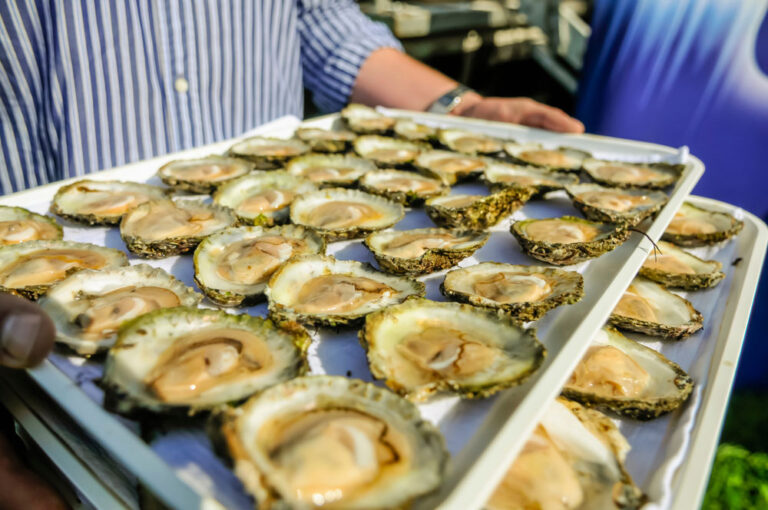Origins and History
The Irish omelette is a delightful fusion of traditional Irish ingredients and the classic French omelette technique. This dish stands out not only for its unique flavor but also for its cultural significance and history.
Historical Background
The omelette, in its basic form, has origins tracing back to ancient Persia. However, the French popularized the modern omelette, a culinary tradition they hold dear. The Irish omelette, specifically, brings a touch of the Emerald Isle to this international favorite, incorporating ingredients like potatoes, onions, and Irish cheese.
Irish Influence
Ireland’s culinary history is rich with hearty and simple ingredients, often sourced from the land. The Irish omelette reflects this tradition, utilizing:
- Potatoes: A staple in Irish cuisine, potatoes are often cooked and mixed into the omelette for added texture and flavor.
- Onions: Caramelized onions add a sweet and savory element, balancing the dish.
- Irish Cheese: Known for its distinctive taste, Irish cheese such as Dubliner or Cashel Blue provides a creamy, tangy finish.
Evolution of the Dish
The Irish omelette has evolved over the years, with variations emerging based on regional preferences and available ingredients. Some versions might include smoked salmon, another quintessentially Irish ingredient, or fresh herbs like parsley and chives to enhance the flavor profile.
Essential Ingredients
Creating an authentic Irish omelette requires a careful selection of ingredients that highlight the flavors and textures characteristic of Irish cuisine. Here’s a detailed look at what you’ll need:
1. Potatoes
- Variety: Opt for floury potatoes like Russets or Irish varieties such as Kerr’s Pink.
- Preparation: Peel and parboil the potatoes until tender but not mushy, then cut them into thin slices or small cubes. This ensures they cook evenly within the omelette.
2. Onions
- Type: Yellow or white onions work best, as they caramelize well.
- Preparation: Thinly slice the onions and cook them slowly in butter or oil until they are golden brown and sweet. Caramelizing the onions enhances their natural sweetness, adding depth to the omelette.
3. Irish Cheese
- Varieties: Dubliner cheese offers a nutty and sharp flavor, while Cashel Blue provides a creamy and tangy taste. For a milder option, consider an Irish cheddar.
- Preparation: Grate the cheese for even melting and easy incorporation into the omelette.
4. Eggs
- Quality: Use fresh, free-range eggs for the best flavor and texture.
- Quantity: Depending on the size of the omelette, 3-4 eggs are usually sufficient.
5. Butter
- Type: Irish butter, such as Kerrygold, is preferred for its rich, creamy texture and flavor.
- Use: Butter is essential for both cooking the potatoes and onions and for ensuring the omelette has a golden, slightly crispy edge.
6. Salt and Pepper
- Seasoning: Season the eggs with a pinch of salt and a few grinds of black pepper. Adjust to taste during cooking.
Optional Ingredients
- Smoked Salmon: Adds a delicate, smoky flavor and pairs well with the other ingredients.
- Fresh Herbs: Chives, parsley, or thyme can be finely chopped and added for a fresh, aromatic touch.
- Spinach: Fresh spinach can be sautéed and incorporated for additional nutrition and flavor.
Preparation and Cooking Steps
With all the essential ingredients gathered, it’s time to bring the Irish omelette to life. Follow these steps for a perfectly cooked, flavorful omelette.
Step 1: Prepare the Ingredients
1. Potatoes:
- Peel and parboil the potatoes until they are tender but still firm.
- Let them cool slightly, then slice them thinly or cut into small cubes.
2. Onions:
- Peel and thinly slice the onions.
- In a skillet, melt a tablespoon of Irish butter over medium heat.
- Add the sliced onions and cook slowly, stirring occasionally, until they are caramelized (about 15-20 minutes). Set aside.
3. Cheese:
- Grate the Irish cheese and set it aside.
4. Eggs:
- Crack the eggs into a bowl.
- Add a pinch of salt and a few grinds of black pepper.
- Beat the eggs until well combined.
Step 2: Cook the Potatoes
1. In a large skillet or non-stick frying pan:
- Melt another tablespoon of Irish butter over medium-high heat.
- Add the sliced or cubed potatoes.
- Cook until they are golden brown and crispy on the edges, about 5-7 minutes.
- Remove from the pan and set aside.
Step 3: Combine and Cook the Omelette
1. In the same skillet:
- Melt a small amount of Irish butter over medium heat.
- Ensure the butter coats the entire bottom of the skillet to prevent sticking.
2. Pour in the beaten eggs:
- Allow the eggs to cook undisturbed for a minute or so until the edges start to set.
3. Add the fillings:
- Evenly distribute the caramelized onions and cooked potatoes over the eggs.
- Sprinkle the grated cheese on top.
- If using smoked salmon or fresh herbs, add them at this stage.
4. Cook the omelette:
- Reduce the heat to low.
- Cover the skillet with a lid to help the cheese melt and the eggs cook through without burning the bottom.
- Cook for an additional 2-3 minutes or until the eggs are fully set and the cheese is melted.
Step 4: Serve the Omelette
1.Fold and Slide:
- Gently fold the omelette in half using a spatula.
- Carefully slide the omelette onto a serving plate.
2.Garnish:
- Add a sprinkle of fresh herbs on top for a burst of color and flavor.
- Serve with a side of fresh salad or buttered toast for a complete meal.

Variations and Customization
The beauty of the Irish omelette lies in its versatility. Here, we explore various ways to customize the dish to cater to different tastes and dietary preferences.
1. Vegetarian Variations
Mushroom and Spinach:
Sauté sliced mushrooms and fresh spinach with the caramelized onions. Mushrooms add a meaty texture, while spinach provides extra nutrition.
Tomato and Basil:
Add diced tomatoes and fresh basil leaves. The tomatoes bring a juicy sweetness, and basil adds an aromatic touch.
2. Seafood Enhancements
Smoked Salmon and Dill:
Incorporate pieces of smoked salmon and sprinkle with fresh dill. The salmon adds a smoky flavor, and dill complements it perfectly.
Shrimp and Chives:
Add cooked shrimp and chopped chives. Shrimp offers a subtle sweetness, and chives add a mild onion flavor.
3. Meaty Additions
Bacon and Cheddar:
Cook crispy bacon pieces and mix them in with Irish cheddar cheese. Bacon provides a savory crunch, and cheddar enhances the creamy texture.
Sausage and Peppers:
Sauté slices of Irish sausage and bell peppers. Sausage adds a robust flavor, while peppers bring a slight sweetness and color.
4. Healthy Alternatives
Egg Whites Only:
Use only egg whites for a lower cholesterol option. This creates a lighter omelette while still maintaining the protein content.
Add Quinoa:
Mix in cooked quinoa with the potatoes for added fiber and protein. Quinoa offers a nutty flavor and a pleasant texture.
5. Herb and Spice Infusions
Herb Blend:
Combine fresh herbs like parsley, chives, thyme, and tarragon. These herbs add freshness and complexity to the omelette.
Spicy Kick:
Add a pinch of red pepper flakes or diced jalapeños for a spicy version. This variation adds heat and a vibrant flavor.
Tips for Customization
Balancing Flavors:
When adding new ingredients, ensure the flavors complement each other. For instance, balancing sweet and savory or incorporating fresh herbs to enhance the overall taste.
Portion Control:
Avoid overloading the omelette with too many ingredients, as it can affect the cooking process and the texture.
Cooking Technique:
Adjust the cooking time based on the added ingredients. For example, vegetables with higher water content may require a longer cooking time to prevent the omelette from becoming watery.
Cultural Significance and Modern Adaptations
The Irish omelette, with its rich history and versatile nature, holds a special place in Irish cuisine and culture. Its cultural significance and modern adaptations keep the dish relevant and exciting.
Cultural Significance
1. Symbol of Irish Hospitality:
- The Irish omelette often features in Irish households as a hearty, comforting meal that embodies the warmth and hospitality of Irish culture. It’s a dish that brings families together, especially for breakfast or brunch.
2. Connection to Irish Heritage:
- The use of traditional Irish ingredients like potatoes and Irish cheese ties the omelette to Ireland’s agricultural roots. Potatoes, in particular, are a staple of Irish cuisine, historically significant due to their role in sustaining the population through tough times.
3. Showcase of Local Produce:
- The Irish omelette highlights the quality of local produce. From farm-fresh eggs to artisanal cheeses, the dish celebrates Ireland’s commitment to fresh, locally-sourced ingredients.
Modern Adaptations
1. Gourmet Variations:
- Chefs in contemporary Irish restaurants have elevated the traditional Irish omelette by incorporating gourmet ingredients such as truffle oil, wild mushrooms, and artisanal cured meats. These adaptations bring a touch of sophistication to the humble omelette.
2. Health-Conscious Versions:
- With an increasing focus on health and nutrition, modern versions of the Irish omelette often include superfoods like kale, quinoa, and avocados. These ingredients not only boost the nutritional profile but also add new flavors and textures.
3. Fusion Cuisine:
- The Irish omelette has also found its place in fusion cuisine, blending elements from other culinary traditions. For instance, incorporating spices from Indian or Mediterranean cuisines can create a unique twist that appeals to diverse palates.
4. Vegan and Plant-Based Options:
- As the popularity of plant-based diets grows, vegan versions of the Irish omelette have emerged. These might use chickpea flour or tofu as a base, with nutritional yeast providing a cheesy flavor. Vegetables and herbs remain key components, ensuring the dish is flavorful and satisfying.
Celebrating the Irish Omelette
1. Festivals and Food Events:
- The Irish omelette is often featured in food festivals and culinary events across Ireland. These events celebrate the dish’s heritage and provide a platform for chefs to showcase their creative takes on the classic recipe.
2. Home Cooking:
- For home cooks, the Irish omelette remains a versatile and beloved dish. Whether served as a quick breakfast or a leisurely brunch, it’s a recipe that’s easy to customize and perfect for showcasing seasonal ingredients.
3. Cookbooks and Media:
- The Irish omelette continues to be highlighted in cookbooks and food media, with recipes and variations shared widely. This keeps the dish in the public eye and encourages people to explore its many possibilities.
Conclusion
The Irish omelette is more than just a meal; it’s a testament to the rich culinary traditions and innovative spirit of Irish cuisine. From its humble origins to its modern adaptations, this dish has evolved while staying true to its roots. Whether enjoyed in a traditional or contemporary setting, the Irish omelette remains a delicious and meaningful part of Ireland’s culinary heritage.
Some of our favorite Irish Omelette Recipes
POTATO AND LEEK OMELETTE
Description: This omelette features the comforting flavors of potatoes and leeks, making it a satisfying and wholesome dish, perfect for...
View RecipeIRISH BREAKFAST OMELETTE
Description: A hearty omelette inspired by the traditional Irish breakfast, packed with bacon, sausage, mushrooms, and tomatoes. Perfect for a...
View RecipeSMOKED SALMON AND IRISH CHEESE OMELETTE
Description: A rich and flavorful omelette that combines the delicate taste of smoked salmon with the creaminess of Irish cheddar....
View RecipeIRISH OMELETTE
An Irish omelette is a hearty and flavorful breakfast dish that is quick and easy to make. It typically includes...
View Recipe










